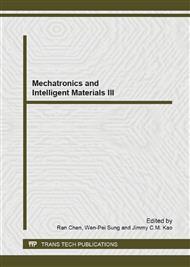p.158
p.163
p.167
p.172
p.176
p.180
p.184
p.189
p.193
Organized Assembly and Morphologies of Aromatic Schiff Base Compounds in Organized Molecular Films
Abstract:
A novel aromatic Schiff base ligand has been designed and its interfacial phase behavior as well as the in situ coordination with Cu(II) ion was investigated. A series of measurement methods, such as surface pressure-area isotherms and atomic force microscopy measurement, have been used to characterize the deposited monolayer and multilayer films. It has been found that both the ligand and the corresponding complex formed stable monolayer or multilayer films at the air/water interface, which could be subsequently transferred onto solid substrates to construct Langmuir-Blodgett films. It was interesting to note that there existed a novel phase transition when the ligand was spread on pure water surface. During this phase transition, the two dimensional flat film changed into a three dimensional fiber-like nano-architectures. However, upon coordinating with Cu(II) ions, only flat films were obtained. Such distinct difference was suggested to be mainly due to the change of molecular conformation and/or the hydrophobicity in the process of supramolecular assembly at the air/water interface.
Info:
Periodical:
Pages:
176-179
Citation:
Online since:
June 2013
Authors:
Keywords:
Price:
Сopyright:
© 2013 Trans Tech Publications Ltd. All Rights Reserved
Share:
Citation:


